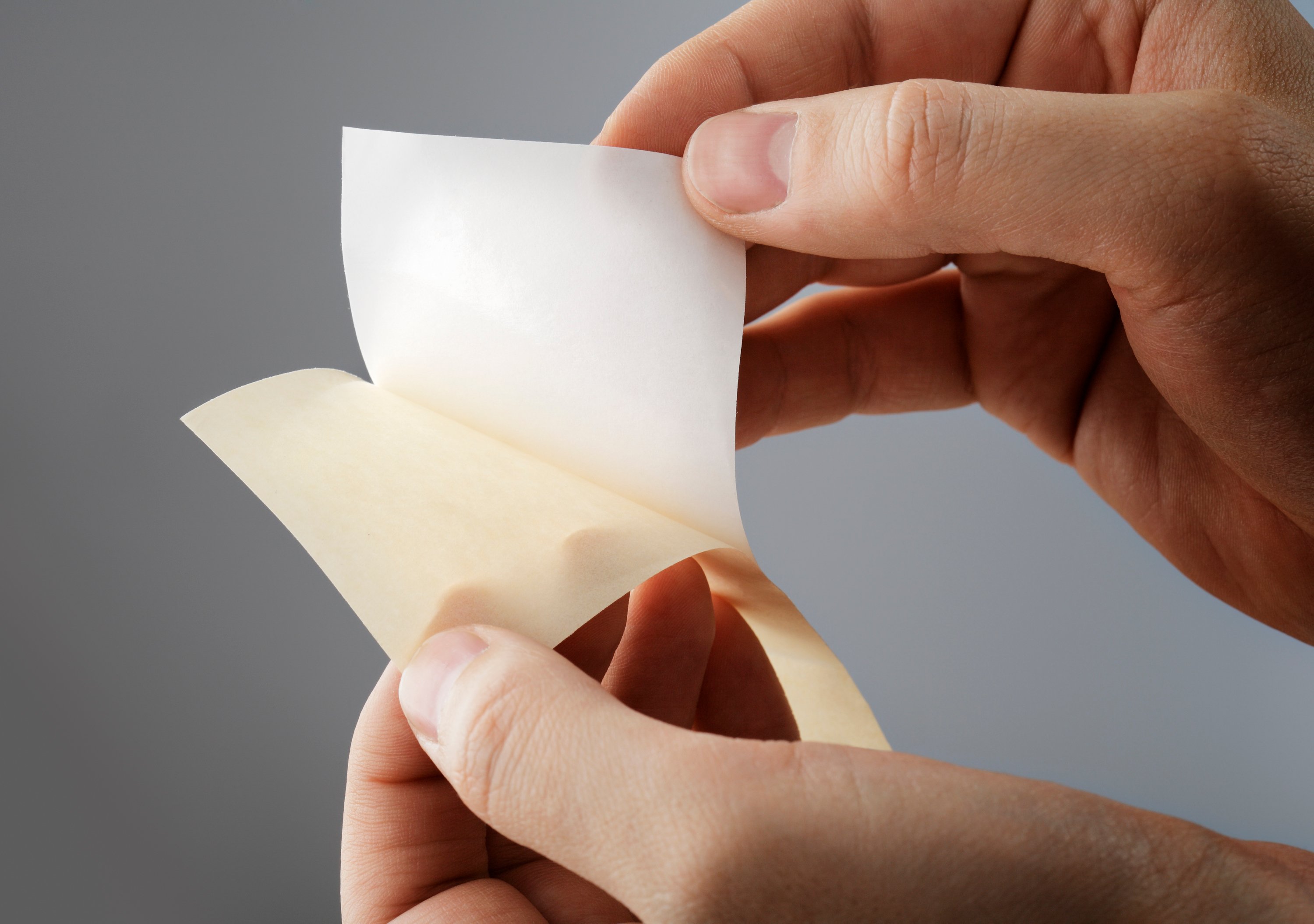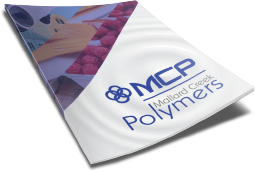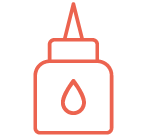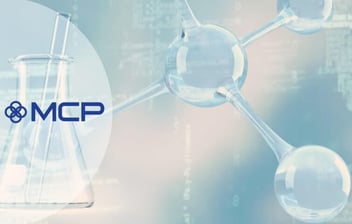
What is tack, peel, & shear?
If you lift the corner of a removable film, such as a protective coating applied to a mobile phone screen, it should pull away cleanly and easily. Try the same on a shipping label, and it should adhere stubbornly to the package. Both are adhesive..
If you lift the corner of a removable film, such as a protective coating applied to a mobile phone screen, it should pull away cleanly and easily. Try the same on a shipping label, and it should adhere stubbornly to the package. Both are adhesive applications, yet the needs are very different. The way an adhesive performs is strongly influenced by the polymer emulsion included in the formulation. Even what seems like a minor change in the polymer emulsion can have a big impact on the nature of the bond.
Three Properties of Adhesive Performance

Adhesive performance can be characterized by the properties of tack, peel and shear. These properties define the type of bond created between two surfaces.
Tack is described as a measure of how quickly an adhesive bond is formed when two surfaces are brought together with light pressure. The faster two surfaces bond, the higher the tack. On the contrary, lower tack allows an adhesive film or tape to be repositioned. Tack is sensitive to a variety of factors, including temperature, processing and the properties of the adhered surface, and is measured using a number of methods. The Pressure Sensitive Tape Council (PSTC) compiles these methods into a reference publication each year, adding new testing methods and refining current methods. Three tests covered in this resource are the loop tack test, the probe tack test and the rolling ball tack test. The commonly used loop tack test, PSTC-16, involves forming a film loop with the coated adhesive facing the outer side. The loop is brought down on a surface of choice for a brief moment and is then lifted back up. The measured pull-back force is denoted as loop tack.
Peel is a measure of the force needed to break the bond between an adhesive and the surface it has been applied to. This determines the strength of the bond. In peel testing, an adhesive-coated specimen is applied to a test panel or against another adhesive specimen and allowed to sit before being pulled away. For consistency of results, the testing parameters, such as direction (at a straight or right angle), application rate of pressure and the dwell time, are standardized based on bond type and intended performance measurement. These standards are provided both by PSTC (PSTC-101 Peel Adhesion Test) and ASTM International (ASTM D3330–Standard Test Method for Peel Adhesion, ASTM D6252–Standard Test Method for Peel Adhesion at 90° Angle, ASTM D903–Standard Test Method for Peel or Stripping Strength, and ASTM D1876–Standard Test Method for Peel Resistance).
Shear is the ability of a material to resist lateral forces that cause it to slide against itself and can be thought of as one surface sliding over another. In a shear test, an adhesive-coated specimen is mounted vertically with a given weight attached. Shear is measured by the time required for the weight to cause the specimen to come loose, demonstrating the durability of a bond. Shear tests are standardized by PSTC-107 Shear Adhesion of Pressure Sensitive Tape, as well as by multiple standards from ASTM International, depending on the substrates and application.
The Emulsion Polymer Contribution
Solution polymerization has been historically the main polymerization process to make adhesives. It requires that the monomer(s) be dissolved in a hydrocarbon solvent, usually hexane or cyclohexane, and polymerized with the introduction of an organometallic catalyst. Unfortunately, the use of these solvents has drawbacks. Solvents are more costly, require a recapturing process, and in the final end-use products, the resulting polymers can release volatile organic compounds (VOCs).
Emulsion polymerization, on the other hand, is a water-based process: monomers, surfactants and initiators are placed in water, which is where the polymer-building steps occur, inside of micelles. For this reason, emulsion polymers serve as the basis for a variety of adhesives and have gained in popularity over time. Because these water-based adhesives are made in the absence of flammable solvents, they are considered to be safer and more environmentally friendly, with fewer VOCs, than solvent-based adhesives. These adhesives may be based on any one of different emulsions, including styrene-butadiene polymers, styrene-acrylic or all-acrylic polymers and vinyl-acetate polymers.
When formulating an adhesive, it’s important to consider how the chosen emulsion polymer will affect the final properties of the finished product. The glass transition temperature (Tg), gel content and degree of carboxylation of the polymer each have a bearing on tack, peel, and shear performance of an adhesive.
- Tg influences pliability, especially at low temperatures, which is an important consideration when you need an adhesive for labels used on frozen goods. Also, lower Tg polymers, such as those used in medical tapes, have a smoother peel feel, while higher Tg polymers, such as those used in packaging tapes, have a “shocky” feel.
- Gel content measures cross-linking within an emulsion polymer. Increased cross-linking provides higher shear or durability, while less cross-linking results in higher tack and adhesion. This attribute is predominant in styrene-butadiene emulsion polymers.
- Modulus of a polymer is dictated by monomer composition and by the molecular architecture of the polymer. For instance, shorter-chain acrylate monomers tend to produce polymers with higher modulus and thus higher shear, while longer-chain acrylate monomers result in lower modulus and correspondingly higher tack and adhesion. A carboxylated polymer tends to build bond strength over time. Bond strength is something you might look for in a shipping or package label. Non-carboxylated polymers tend not to build adhesion over time, which is an important attribute in removable adhesives.
While it is difficult to maximize tack, peel and shear simultaneously, few applications call for such a combination. In particular, tack and peel are usually in opposition to shear. The approach to formulating a latex emulsion for adhesive applications revolves around understanding the necessary combination of the three to achieve maximum performance.
Work with Your Supplier
How well an adhesive performs is strongly influenced by the polymer emulsion included in the formulation. Different emulsions provide varying levels of tack, peel, and shear. When standard product offerings don’t provide quite the combination needed, a specialty manufacturer can customize the properties of their emulsions to meet the application requirements.
Contact Mallard Creek Polymers to discuss your adhesive project needs.

 Construction
Construction
 Nonwovens
Nonwovens
 Adhesives
Adhesives
 Textiles
Textiles
 Printing & Packaging
Printing & Packaging
 Paper
Paper
 Paints & Coatings
Paints & Coatings






